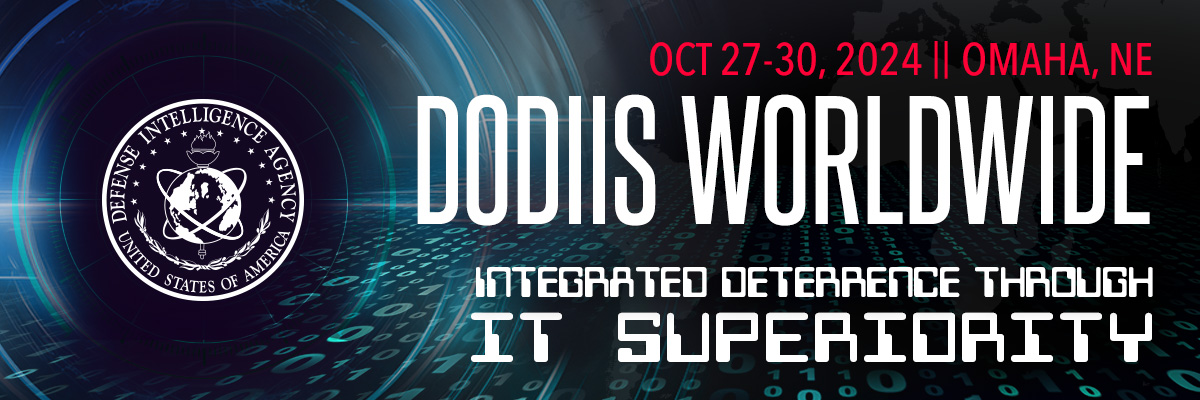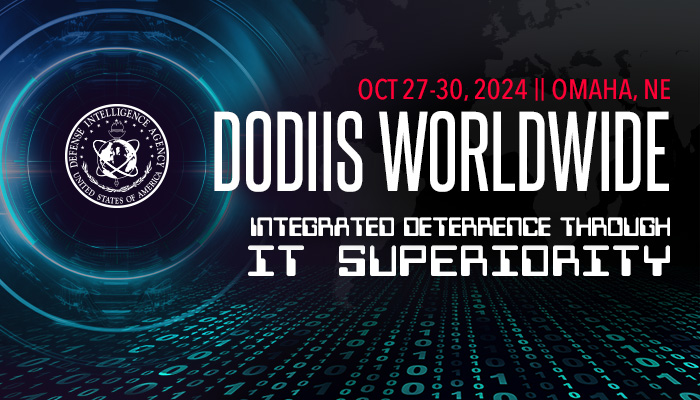LUNCH AND LEARNS
There will be four theaters used for industry presentations, all located in the DoDIIS Exhibit Hall. Lunch and Learns, Coffee Talks, and Executive Briefings will all take place using these theaters.
MONDAY, OCTOBER 28
Stadium Theater
Lunch & Learn
Blockchain Intelligence and Attributing Countering Islamic Extremist Funding
Historically, a key aspect of terrorist funding was associated with charitable organizations sympathetic with a particular cause. Today, this is still the case, but various funding networks now utilize cryptocurrency to move value. In this session, we will discuss how the use of cryptocurrency to raise money for individuals in the Al-Hol and Al-Roj refugee camps presents insights into how groups and individuals potentially affiliated with the Islamic State are moving funds into the region. Ultimately, whilst these groups continue to use cryptocurrency, it will remain possible for USG to map out their local financial networks and glean intelligence from this activity.
Market Theater
Imagine a world where boundaries and restrictions are dismantled, and you can connect to networks, agencies, and partner countries at different security levels as needed to support your mission! Join us for an informative session where Everfox will discuss the latest advances that are making it possible to remove barriers to connectivity for U.S. and FVEYS, helping to enable seamless connectivity and access to information at disparate classification levels, including access to AI engines, today. Learn how new technology such as Trusted Thin Client Multi-Enterprise Spanning (TTC MESA) and the recent addition of Garrison SAVI are coming together to help enable warfighters to have information readily available that in the past was inaccessible. Everfox Chief Technology Officer, George Kamis, will discuss how these solutions are transforming secure controlled collaboration and scalable information sharing, while maintaining the highest levels of security and control.
By partnering with Cribl, Elastic and Tines, organizations can effortlessly protect their data while streamlining security operations through automation. Together Cribl, Elastic and Tines empower you to scale, adapt to changing threats, and stay ahead of the curve without compromising on efficiency or security.
Cornfield Theater
In today’s complex threat landscape, simply being compliant isn’t enough to protect your organization from cyber risks. This session explores the critical difference between compliance and true cybersecurity resilience. We’ll discuss how vulnerabilities can persist despite compliance, the dangers of a false sense of security, and the importance of a robust cyber posture. Learn how automating compliance can free up your cyber and network professionals to focus on more strategic tasks, driving better ROI and enhanced cyber readiness. Learn how to go beyond compliance to leveraging automation to maximize your ROI.
Bridge Theater
Lunch & Learn
Modernize Your Workforce and Adapt More Quickly to Support the Agency Mission
Learn how Workday provides an open, interoperable and extensible platform that enables real-time data access, better decision making, unmatched workforce transformation, and a zero trust architecture. Workday’s unique intelligent data core provides a unified source of truth with configurable frameworks for business process management, reporting and analytics. See how the IC can put its people at the center by identifying and directing skills and expertise across the organization to enable complex problem-solving.
TUESDAY, OCTOBER 29
Stadium Theater
Lunch & Learn
What Does Your Data Say About You? The Risks and Opportunities of Technical Surveillance in the Digital Age
Intelligence Operations and Integrated Deterrence activities are under threat from digital surveillance fueled by ubiquitous data collection. Learn about the risks of Ubiquitous Technical Surveillance (UTS) to organizations and operations. We’ll discuss strategies for mitigating and exploiting UTS threats through education, training, and IT capabilities.
Coffee Talk
Understanding and Modeling Regional Stability: Case Study from Red Sea Crisis
A campaign of attacks against commercial shipping in the Red Sea by Yemeni rebel group Ansar Allah prompted a sharp decline in transits through the critical waterway and an armed response by a coalition of countries led by the United States. The implications of the crisis, require understanding in the geographical context in the Yemen conflict, the anti-ship capabilities of Ansar Allah, and the capabilities of naval forces in theatre to respond. They also have far-reaching impacts. Learn how Janes analysts developed a methodology for Country Stability Indicators (CSI) to quantify the socio-political risk faced by 184 countries or territories based on political, social, and economic factors to understand the progressing threat up to and including the risk of disorderly government collapse, forceful transfer of power, or fragmentation of state power across the country, which may lead to societal unrest and violence. We will examine how the Red Sea crisis created a need for an enhancement to our analysis model to incorporate Neighboring stability and Conflict Risk to develop a complete picture.
Market Theater
It’s no secret that The Department of Defense is pioneering the use of AI-powered applications to enhance decision intelligence across key operations, including intelligence collection and analysis, autonomous systems, and resource optimization. Decision advantage relies on deep understanding of your target and yourself. Frequently, however, the insights necessary for that advantage can only be created by automated analysis, at scale, of large and disparate data sets. Virtualitics, the Mission AI Company, is a leader in delivering AI decision intelligence applications for enterprises and government. One of our key applications integrates threat intelligence, vulnerability scans, and host criticality to create a comprehensive risk assessment that drives prioritization and actionable insights within an organization. In this session, see for yourself how AI can help transform defense capabilities across critical mission sets, apply ML to drive cyber data insights and get the most out of your existing data to maximize effectiveness and efficiency.
Coffee Talk
Addressing the Foreign Language Gap: Transforming Language Missions with AI Model Customization
Federal agencies face significant challenges in meeting their foreign language mission requirements due to shortages of translators and staff with the necessary language skills. Artificial intelligence, particularly advancements in LLM fine-tuning and customization, offer a promising solution to closing this gap. With these new developments, DoD and Intelligence Agencies have begun deploying custom AI models to accelerate and scale text, video, and speech processing workflows. This session will delve into the AI + human workflow that enables domain model training, and share real-life applications for DoD and Intelligence agencies around the world.
Cornfield Theater
Lunch & Learn
Federal Asset Management for Cybersecurity: A Modern Solution for An Age-Old Challenge
Asset management in Federal agencies used to be easy, but not anymore. Where and how we work, the types and amount of devices we use, and the ways and places we store information have all changed. What’s stayed the same, though, is the fact that knowing what’s in our environment is absolutely essential to securing it – in fact, several unfunded mandates have prioritized asset management as the key to zero trust (M-22-09), infosec (M-24-04), and incident response (M-21-31). Farewell, manual asset inventory approaches! Hello to a modern approach to asset management — one that leverages existing data and automation to solve the challenges specific to cybersecurity. Join this session to learn: – Why old asset management approaches fall short. – How other cybersecurity initiatives are impacted by insufficient asset management. – A new approach that leverages existing data to solve the asset management challenge for cybersecurity.
Bridge Theater
Google Cloud’s unique AI capabilities empower defense organizations to achieve mission success. Discover how Google Distributed Cloud (GDC) enables organizations to overcome the challenges of deploying AI at the edge while ensuring data security and compliance.
WEDNESDAY, OCTOBER 30
Stadium Theater
Lunch & Learn
Turbocharge Your Operations: Secure and Efficient Asset Management with Jira Service Management
Are you grappling with digital asset management in a high-security environment? Discover the game-changing potential of Jira Assets in Jira Service Management for your government team. This session will unveil how advanced Asset Management can supercharge your efficiency by streamlining operations and slashing routine tasks, bring unparalleled organization with clear and structured asset handling, and turbocharge your agility for swift, effective operations within a secure IL4 environment. Dive into innovative strategies for live request tracking, optimizing IT service management, and empowering HR and administrative teams, all while fortifying your assets with layered security measures. Don’t miss out on this chance to revolutionize your digital asset management and elevate your team’s performance to new heights.
Market Theater
Lunch & Learn
Mission Enabling, Modern Business Intelligence Solutions – Platform for Analysis (PfA)
PfA by SAP NS2 turns national security organizational data into real-time insights for data-driven, informed decision making. This cloud-based solution supports data warehousing and business intelligence (BI) and enables a secure, integrated ecosystem for your business data and domains (e.g., personnel and asset management, finance, planning and budgeting). Learn how to strengthen mission operations through business-driven decisions and actions. Gain understanding of how PfA is executed through a robust, integrated sandbox to explore analytics and datasets—all while providing toolsets for enhanced reporting. Tailored to unique Intelligence Community (IC) organizations, explore how PfA equips data scientists, business analysts, and report builders with a self-service environment for seamless, comprehensive dashboarding and visualizations. In this session, you’ll gain peace of mind that SAP NS2 conforms to organizational security models, implements attribute-based access controls (ABAC), and secures business data. Engage with SAP NS2 and dive deeper into the possibilities of PfA.
Cornfield Theater
Natural Language Processing (NLP) is a field of artificial intelligence that focuses on the interaction between computers and humans through natural language. NLP calls for teaching a computer how to understand language and using that understanding to add value. You likely use NLP everyday by way of search engines, spell checkers, spam filters, and machine translation or speech recognition systems. Platforms like Alexa, Siri, Google Assistant, and Cortana utilize NLP as their primary way of interacting with users, and at many levels underneath. Agencies may be interested in NLP to sort, search, and filter large amounts of data, automated translation, summarization and even more is being done with generative AI for interactive question answering and code generation. They may use sentiment analysis to gauge public opinion, detect potential threats, and understand the emotional tone of communications. These capabilities make NLP an indispensable tool for the intelligence community, enhancing their ability to process and analyze information quickly and accurately.
Bridge Theater
Organizations today face a barrage of security assessments from external auditors, internal teams, and other entities. System owners are overwhelmed by the increasing number of compliance mandates, which often overlap in their requirements and create inefficiencies in resource-constrained environments. With the rise of zero-trust security models across industries, maintaining a robust risk management process is more critical than ever to uphold an organization’s security posture. As IT modernization efforts advance, it is crucial to ensure continuous authorization practices are implemented. During this session, we will dive deeper into several key areas: -Examining the top 5 security compliance regulations across industries, analyzing their interdependencies, and discussing a comprehensive solution to manage these diverse requirements. -Defining continuous authorization, exploring the efforts required to maintain security certifications, and discussing how to integrate these processes with DevSecOps pipelines to build security into modern, agile IT capabilities. -Identifying ideal use case scenarios for automating compliance, and the expected outcomes. -Evaluating technology solutions to automate security compliance, including the pros, cons, and best practices for implementation, as well as the role of low-code platforms and generative AI in streamlining compliance workflows. In conclusion, to enhance agencies’ security and cyber assurance, we need to implement a risk-based approach for continuous authorization, IT compliance, security, and risk assessment. This will reduce the time and complexity of the assurance process, enabling a faster, more cost-effective, and sustainable solution.














 1021 NE Grand Avenue
1021 NE Grand Avenue 435 NW Wasco Street
435 NW Wasco Street  1401 SW Naito Parkway
1401 SW Naito Parkway 375 NE Holladay Street
375 NE Holladay Street  1441 NE 2nd Avenue
1441 NE 2nd Avenue 545 SW Taylor Street
545 SW Taylor Street 921 SW 6th Avenue
921 SW 6th Avenue 1000 NE Multnomah Street
1000 NE Multnomah Street